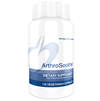|
by Dr. Jessica Corbeille Harris, ND
Physical reactions to foods are common, but not all physical responses are classified as a true “food allergy” – many are deemed “food intolerances” instead. What’s the difference? Food Allergies: An immediate immune system response to a food (even a tiny amount of that food) that causes sometimes widespread involvement in the body including (but not limited to) hives, anaphylaxis (closure of airway), asthma reaction, swelling, itching, or immediate GI distress/diarrhea. Food Intolerance: An immune system response that is often delayed and can cause wide-spread, non-specific, sometimes less severe systemic responses. Sometimes a little bit of the food isn’t enough to trigger symptoms (but sometimes it is!). Common food intolerance symptoms include: GI upset (most common), increase in muscle and/or joint pain, headache, irritability/mood changes, depression/anxiety, breathing difficulties (less severe than an asthma attack or anaphylaxis), heartburn, ear infections, sinus congestion, post-nasal drip, urinary pain or discomfort, skin reactions (eczema, psoriasis, rashes, etc.), heart palpitations, and more. Basically, many of the symptoms people experience regularly can be caused by the foods they are eating. It’s important to understand the difference between a true allergy and an intolerance, but often in either case, the problematic food/foods will be avoided (obviously this is a much more serious recommendation in the case of anaphylactic food allergens!). One important symptom that I like to point out to patients at my clinic is the association with food to pain.The majority of my patients seek treatment with me for their pain, but many of them are not expecting me to suggest a food allergy/intolerance test as part of the work-up for the cause of their pain. Yes, I do like to treat pain with injection therapies (i.e. prolotherapies, PRP, neural therapies, etc.), but if the patient continues to eat a food that is causing them inflammation (pain), then the treatments are not likely to have a lasting effect – and sometimes they don’t work at all until the problematic food(s) are eliminated. For this reason, I often will order a food intolerance test for patients as part of their initial workup when I suspect food as a component to their pain problem. The testing I use is relatively inexpensive and results come back quickly. These tests are really excellent ways to figure out quickly the most likely problematic food triggers for their body – and I OFTEN see that eliminating problematic foods for a period of time (or for good) will SIGNIFICANTLY change their pain problem! Are you ready to explore your food intolerances? If so, send us a message through our Contact page today!
0 Comments
by Dr. Jessica Corbeille Harris, ND
I’ve been getting the question a lot lately – “Why does PRP work for healing my joints and also for treating my sagging skin?” So, I thought I’d share a little more about Platelet Rich Plasma (PRP) therapy. For a PRP treatment, we collect a sample of the patient's own blood, process it to collect growth factors, combine it with nutrients and ozone gas, and then inject it into the damaged tissues (tendons, ligaments, bone, skin, etc.). PRP is loaded with concentrated growth factors from your body’s own immune system which is really the magic in the medicine. The healthier a patient is to begin with, the “better” their PRP product is, which means the better results they will get from a PRP treatment. In the case of joint pain, the growth factors in the PRP help the body to heal and regenerate soft tissues (like tendons and ligaments) which helps to stabilize the joint and therefore decrease the pain. Often, people think they have sore and/or tight muscles which is causing their pain. In reality, the muscles have become sore and tight to compensate for weak tendons and ligaments. So, by treating the damaged tendons and ligaments to stabilize the joint, we can actually treat the pain! With wrinkled and sagging skin, there is a similar loss of soft tissue – collagen, in this case. The growth factors from the PRP are injected here to support the collagen matrix under the skin, thus providing more of a scaffold for the top layer of the skin to hold on to. This ultimately decreases the wrinkles, “sagging”, scaring, and the dreaded “bags” under the eyes. For hair regeneration, the growth factors in the PRP work to help the hair follicles regenerate thus promoting hair growth in areas where the hair follicle had degenerated. The injections themselves also work to improve circulation to the area which naturally increases hair growth as well. PRP, although wonderful and capable of dramatic results, is an advanced technique requiring special equipment and training by the practitioner. Always consult with your practitioner about their specific methods, ingredients, training and other details of the procedure to gain a full understanding of how their product and method can help you. If you're interested in getting started with PRP treatments today, send us an inquiry from our Contact page today or give us a call at 206-566-7225.
I always tell my patients that anti-depressant medications and anti-anxiety medications were originally created with good intentions in mind, but now they are drastically overused in our country. The 2 biggest groups of people I see prescribed these medications are teenagers, both boys and girls, and women above the age of 40. What do these 2 groups of people have in common? They are both going through major hormonal transitions in life. All depression and anxiety has an underlying cause. Depression and anxiety are symptoms of something else deeper going on. What the doctor should be asking is WHY is this patient having this problem and these symptoms. Sure, anxiety and/or depression can be situational based on what is going on in a person’s life, but it shouldn’t be running your entire life. The most common underlying causes of anxiety and depression are all treatable without using pharmaceutical medications. Often times I find in clinical practice that anxiety and depression are caused by the combination of a variety of these factors. The most common underlying causes of anxiety and depression I see in my office are: 1. Hormonal Imbalances: Hormone Imbalances in both men and women:Depression and anxiety can be the first sign of low Testosterone in both men AND women. Yes, women need Testosterone too! Fluctuations and imbalances in estrogen and progesterone in women often manifest as psychological and emotional symptoms such as depression and anxiety. 2. Undiagnosed Thyroid Disorders: The standard lab tests used to diagnose thyroid disorders are very limited. The commonly used test only looks at a couple steps in a very complicated process. Thyroid disorders go undiagnosed for years because doctors aren’t doing a complete and thorough thyroid panel. 3. Vitamin D deficiency: Vitamin D, then sun vitamin, is important for psychological and emotional health in so many ways. Most notably, Vitamin D is a co-factor needed in the process to create Serotonin and Dopamine, your happy, calm, cool and collected neurotransmitters. If we don’t have enough vitamin D, we can’t make sufficient amounts of those happy hormones. 4. B Vitamin deficiencies: I am seeing more and more B12 deficiencies these days. Often supplements and vitamins contain the wrong types of B12, B9 and B6 so people’s bodies don’t know how to assimilate them properly. All B vitamins & vitamins are not created equal. 5. Low Iron levels: One of the most common symptoms I see of low iron, before even patients complain of fatigue, is depression or anxiety. Other markers of iron levels need to be check outside of just someone’s red blood cell count, which would show if someone was anemic. Actual iron levels as well as iron stores should be checked to catch iron deficiency early. 6. Food Sensitivities: Many people are eating foods that can cause or worsen anxiety and depression. These can be discovered using blood testing or doing an elimination diet. Eliminating or minimizing inflammatory foods can help treat and eradicate psycho-emotional symptoms in adults and adolescents. 7. Gastrointestinal dysbiosis: Over 70% of your serotonin and dopamine is actually made in the lining of your gut. The balance of good bacteria to bad bacteria and microbes is integral to our psycho-emotional health. If a person has an overgrowth of bad bacterial in their intestinal tract, this can severely affect your production of serotonin and dopamine and thus your mood.
by Dr. Jessica Corbeille Harris, ND  I see many patients every day who struggle with pain. Sometimes joint pain, sometimes back or neck pain, sometimes muscle pain, and sometimes headaches. One thing these pains all have in common is they are symptoms. And symptoms are always a message from the body to tell us something is not quite right. When the body has all the nutrients, sleep, happiness, support, and water that it needs, the body is free of symptoms. Let’s talk today about one foundational part of your body’s needs – adequate nutrition, and this starts at the dinner table. So let’s say the body isn’t getting the right nutrients it needs. Without the proper nutrients, it cannot make enzymes work properly. Without properly working enzymes, certain things like soft tissue repair cannot happen properly. When the soft tissues are not repaired, other tissues have to work harder (i.e. muscles), and this can lead to the symptom we experience as PAIN. This means that one of the ways we can treat pain before we even use treatments like prolotherapy or PRP is by supporting the soft tissue repair. And to support soft tissue repair, we need the proper nutrients. Research has shown a few nutrients to be especially important in healing and repair of soft tissues, like collagen, for example. Some of these key nutrients are protein, vitamin C, zinc, copper, and manganese.
Please note that the list above is not all-inclusive (other nutrients can be very important for treatment pain too – i.e. magnesium, calcium, MSM, etc.). Diet is a great place to start when it comes to treating pain though. It’s essential that a person is getting the proper nutrition BEFORE we start treatment with prolotherapy, PRP, or other fancy treatment options to ensure your body has the building blocks it needs to make the treatment most effective. Here’s one of my favorite products for pain and healing: ArthroSoothe by Designs for Health. You can find it on our online dispensary or at our clinic. Please email us or give us a quick call today if you are ready to start talking about treating your pain! by Dr. Jessica Corbeille Harris, ND, CES |
AuthorThe Doctors at ENH post to this page regularly with new health information, home remedies, and other interesting tidbits. Archives
May 2024
Categories
All
|
DISCLAIMER: THIS WEBSITE DOES NOT OFFER MEDICAL ADVICE. THE CONTENT OF THIS ELEVATED NATURAL HEALTH WEBSITE AND ANY LINKS INCLUDED ARE INTENDED ONLY FOR EDUCATIONAL AND INFORMATIONAL PURPOSES OR TO DESCRIBE THE CLINICS PRODUCTS AND SERVICES. THIS WEBSITE AND ITS CONTENT ARE NOT INTENDED TO PROVIDE PROFESSIONAL MEDICAL ADVICE, DIAGNOSE THE HEALTH CONDITION OF ANY INDIVIDUAL OR SUBSTITUTE FOR PROFESSIONAL GUIDANCE IN THE ADMINISTRATION OF ANY TREATMENT. YOU SHOULD ALWAYS SEEK THE ADVICE OF A LICENSED PHYSICIAN OR OTHER QUALIFIED HEALTHCARE PRACTITIONER REGARDING ANY PERSONAL CONCERNS AS TO SYMPTOMS, MEDICAL CONDITIONS, OR THE USE OF ANY PRODUCTS. SUCH COUNSEL SHOULD NOT BE DISREGARDED OR DELAYED BASED UPON ANY INFORMATION CONTAINED WITHIN THIS WEBSITE. DR. JESSICA CORBEILLE-HARRIS, ND AND DR. MCKENZIE J TIMMER, ND EACH HAVE A DOCTORATE IN NATUROPATHIC MEDICINE AND ARE LICENSED NATUROPATHIC PHYSICIANS IN THE STATE OF WASHINGTON. ANY REFERENCE TO THE PRACTICE OF NATUROPATHIC MEDICINE DOES NOT APPLY IN STATES WHERE NATUROPATHIC MEDICINE IS NOT LICENSED.
Proudly powered by Weebly





 RSS Feed
RSS Feed